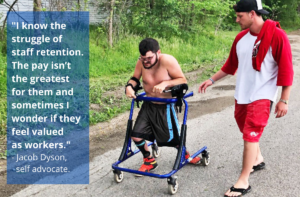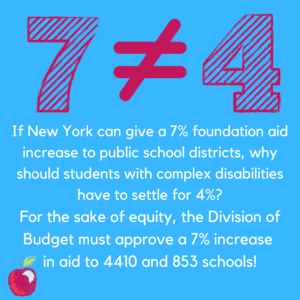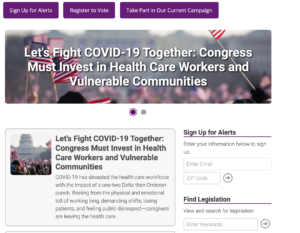 For the first time in United States’ history, all 50 states were under federal disaster declarations simultaneously and every state and territory had declared public health emergencies in March of 2020. For the two consecutive years since, the COVID-19 pandemic has reshaped a lot of aspects of life and business, but particularly for health policy professionals.
For the first time in United States’ history, all 50 states were under federal disaster declarations simultaneously and every state and territory had declared public health emergencies in March of 2020. For the two consecutive years since, the COVID-19 pandemic has reshaped a lot of aspects of life and business, but particularly for health policy professionals.
Healthcare advocacy organizations were thrust into the spotlight and have stayed there, continually working, for the past 24 months. To say that this sector has very particular needs when it comes to advocacy strategy would be an understatement.
But even before the global pandemic, health advocacy strategy has always been a bit different from other types of advocacy. The healthcare space deals with unique challenges and opportunities, particularly due to working with sensitive and very personal (sometimes even private) issues, and with highly-skilled medical professionals.
Promoting changes in healthcare policy requires an effective advocacy strategy that marries learnings from the pandemic as well as tried-and-true methods in this sector. Here, we talk to the pros to get the primer on building and executing successful healthcare advocacy strategies.
The Ultimate Advocacy Planning, Strategy, and Skills Guide
How to Create Effective Health Advocacy Campaigns
There are a variety of strategies health advocates can use to promote their message. Using multiple modalities can be most effective, and combining webinars, action alerts, newsletters, blog posts, and fly-in events can all work together to engage a wide audience and amplify your message.
Here are seven strategies you can use to build impactful health advocacy campaigns:
1. Highlight individual stories with compassion
Having memorable stories is key to a health advocacy campaign, says Michele Guadalupe, associate director of advocacy and access at the National Eczema Association (NEA). “Strategy is key in finding individual stories,” she says. She uses provocative prompts to encourage advocates to share their experiences, asking what barriers they have experienced due to their medical condition. This helps her team understand the community and their eczema journeys.
One aspect of healthcare advocacy to be mindful of is that the individual stories people share are often about sensitive, serious issues, making it different from many other advocacy campaigns. You might find the perfect advocate story, but the advocate is not willing to have it shared publicly, Guadalupe explains. “You have to show compassion and be really cognizant that these folks are pouring their hearts out about the things that are really impacting them,” she says. Guadalupe recommends one-on-one calls with advocates to ensure they understand how their stories will be used and what they are comfortable with.
To make personal stories more powerful, back them up with data and statistics, suggests American Association of Colleges of Osteopathic Medicine’s David Bergman, vice president of government relations. “Making sure you are balancing storytelling with data and statistics you can cite will you help you reach more people — the data-minded and the story-minded—and lend credibility to your campaign,” he says.
2. Build relationships with members of the medical community
Often, members of the medical community can be some of your best advocates, speaking with authority on the issues that matter to your organization. Bear in mind that these professionals are often “information hungry” and want “information rooted in evidence-based practices,” says Francesca O’Reilly, vice president of advocacy at the National PACE Association.
“Medical professionals are used to combing the literature, being well-informed, and going out and doing their own research,” O’Reilly said. So when you get members of the medical community involved, make sure to have plenty of evidence-based information so they can do further research if desired: link to the issue brief, use original sources, link to the rule, bill, or press release — “they want to read it for themselves,” O’Reilly says.
To further foster relationships with medical professionals, it’s important to put your organization out there — go to association meetings, have a booth at conventions, and continuously share relevant policy information with a recurring e-newsletter to members. This will help establish rapport and credibility with medical professionals and will build trust.
But when it comes to taking action, don’t inundate members of the medical community with asks. “You can’t wear your advocates out,” O’Reilly says. “If you reach out every week, you’re going to burn them out. Realize that your audience has limited bandwidth, particularly with COVID-19.”
These relationships will be some of the most important for your organization, as medical professionals’ stories and perspectives have great power to change people’s minds. “Make sure they know that you have their best interests at heart and when you ask for something, you really need their help,” O’Reilly advises.
”“Make sure [your advocates] know that you have their best interests at heart and when you ask for something, you really need their help."
Francesca O'ReillyVice president of advocacy at the National PACE Association
3. Use segmented lists for email advocacy
Email advocacy campaigns are an effective way to create awareness for issues, reach supporters, ask for donations, and inspire supporters to mobilize and take action, so it can be tempting to blast advocates with a constant stream of emails — but be careful not to flood their inbox or they’ll stop paying attention.
To avoid inundating your advocates, segment your email list to hone your message. Using data you already have about your members to create smaller subgroups lets you tailor your advocacy email message and craft more targeted, relevant emails, which will help increase your campaign results. You can segment email campaigns by geography, medical specialty, demographics, how they’ve engaged with previous campaigns, content interest, and more.
Once you send your messages, keep track of your email’s performance and adjust, tweak, and tailor accordingly. If your open rates are low, for example, consider changing your subject line to something more attention-grabbing. If open rates are high but action rates are low, prioritize more effective calls to action or eye-catching images.
Consider comparing your results with the rest of the industry. According to FiscalNote’s 2021 Advocacy Benchmark Report, the average email open rate in healthcare advocacy is 24.8 percent, and the average action rate is 8.5 percent. The highest open rates are typically in the month of April when they average 28.5 percent.
4. Engage with supporters through social media

A robust social media strategy can make all the difference in getting traction on your health advocacy campaign. The rule of thumb with social media messaging is to keep it simple and boil it down to the heart of an issue, recommends William DeVoe, director of communications and advocacy at the Cerebral Palsy Association of NYS.
DeVoe had success employing this strategy while advocating for special education schools to receive government funding at the same rate as public schools. “The messaging was so simple: 7 does not equal 4,” DeVoe says. Other schools were getting a 7 percent increase in funding, while special education schools were only getting a 4 percent increase.

“It was a simple matter of inequality, so we used a social media graphic with a line or two of text explaining — it was so simple and actionable,” he says. “It made it easy for advocates to spread the information.”
This social media move was part of the organization’s larger strategy to help advocates understand the disparity in education funding and empower them to educate legislators that were influential in the process. The campaign resulted in a long-term win, with the governor promising an 11 percent increase in funding in the coming year.
Social Media Advocacy Content Calendar Template
5. Provide advocates with ample training and resources
Particularly in the health space, training advocates should be a crucial part of your strategy — especially when those advocates are healthcare professionals. “Healthcare professionals are very conscientious and they want to do it right,” O’Reilly says. “They’re not as comfortable with winging it.”
In a sector where things can be technical and involve complicated medical issues, training is not optional. Whether it’s with live webinars, recorded videos, role-playing exercises, toolkits, site visits, or storytelling training, educating advocates helps ensure they fully understand your organization and the issues that matter.
Healthcare professionals in particular are used to hands-on training and yearly continuing education, and are “relentlessly curious,” O’Reilly says, so they require and desire thorough training.
6. Build a coalition with like-minded organizations
You’re probably familiar with the proverb, “If you want to go fast, go alone. If you want to go far, go together.” These words ring true in the world of health advocacy. Building coalitions and working with like-minded organizations can expand your numbers, skills, and reach, having a greater impact than your organization working on a campaign solo.
“Don’t even try to do it alone,” says Libby Nealis, child health and education policy advisor with DCS Consulting. “The landscape of coalitions and organizations that are working in the spectrum of healthcare is huge, so always find partners to enlist in projects and advocacy efforts.”
Work with these partners to tailor your message, plan events, or even spread the word about your hashtag. In the healthcare space, in particular, people are very open and willing to collaborate, especially around issues of social and human importance, Nealis says. Whether you join large umbrella organizations, such as the Coalition for Health Funding, or find organizations in your niche, teaming up with like-minded allies can ensure your efforts pack a punch.
Your Guide to Coalition Building for Successful Advocacy
7. Evaluate and act on advocacy metrics
Measuring and evaluating your advocacy efforts is essential to any campaign; it’s the best way to understand what is working and what is not so you can adjust your strategy and optimize your campaigns for success. Building an informed briefing or report on your successes is also one of the most visible parts of your job to higher-ups and peers. An effective report helps show your department’s value and the ROI behind your team’s work.
Evaluating advocacy metrics is a constantly evolving process for DeVoe and his team. “When we have a campaign underway, we’re constantly monitoring the activity, the conversion rate, etc., and we’re adjusting,” he says. “If a particular type of ask didn’t resonate, we try something else.”
DeVoe also analyzes dropoff points to find out where advocates stop before performing an action and asks, Why did that happen? Why don’t they care? What is it that they care about and are willing to act on? Paying close attention to the numbers and performance of your campaigns can show when it’s time to alter your strategy or try something else entirely.
Technology is key for DeVoe’s team. They use VoterVoice to accurately measure and report on their efforts. It helps them break down numbers of new advocates versus old advocates which enables them to show value. Over the past 18 months, the Cerebral Palsy Association of NYS has built a network of advocates 15,000 strong. “If you can’t measure it, you can’t claim success,” DeVoe said.
Examples of Health Advocacy Campaigns
These examples of health advocacy campaigns show how a well-thought-out strategy can have a major impact.
AACOM’s Virtual Advocacy Day
As part of the American Association of Colleges of Osteopathic Medicine (AACOM)’s advocacy day in 2021, the organization chose to engage its members on four key policy issues:
- Removing discriminatory restrictions on osteopathic physicians at federally funded graduate medical education (GME) programs
- Increasing National Institutes of Health research funding for osteopathic medical schools
- Strengthening rural GME
- Authorizing health professions students to vaccinate during public health emergencies
This event was the first time members had the opportunity to participate in virtual congressional meetings.

“Providing training and materials was very helpful to preparing our grassroots advocates and making them feel comfortable and confident to speak about the issues,” Bergman said. Their grasstops advocates, who have extensive experience with in-person advocacy, were able to experience the value and ease of virtual advocacy for the first time.
Since the success of this virtual advocacy day, AACOM advocates have been more engaged in frequent virtual outreach and communication with legislative offices. AACOM is already planning another virtual advocacy day to build upon their success and keep up the momentum.
Trinity Health’s Far-Reaching Campaign
In 2020, Trinity Health ran an issues campaign that covered a wide swath of issues important to advocates. The “Care for the Common Good” campaign focused on issues such as racial diversity, health inequity, access to affordable health insurance, and public health. It encouraged advocates to sign a petition to the U.S. presidential candidates stating that these key issues were critical to them as voters.

The organization used a multi-channel approach, which included email messaging and targeted social media advertising. In addition to adding signatures to the petition, a big goal was to raise awareness and educate the public on these key healthcare issues.
Trinity Health reached out to partners, and even healthcare competitors, asking them to participate. “We not only touched our audiences, we were able to reach into audiences that weren’t ours and even were competitor audiences because the messaging resonated with so many different groups,” says Stephanie J. Armstrong-Helton, who works in communications and digital advocacy at Trinity Health.
The “Care for the Common Good” campaign was wildly successful in accomplishing its goals: 9,200 advocates signed the petition, Trinity Health increased its advocate base by 4,300 new supporters, and received 67,000 clicks on educational materials throughout the campaign’s 52 days.
Beyond these wins, the petition was well-received by the presidential candidates and opened doors for conversations extending into President Biden’s administration. “This campaign allowed us to catapult into the administration in a way others might not have been able to,” Armstrong-Helton says. Since the campaign, Trinity Health has had meetings with White House staff, the United States Department of Health and Human Services, and Centers for Medicare & Medicaid Services to drive their issues forward.
The key to success in a health advocacy campaign is to make sure the campaign connects with who you are as an organization, Armstrong-Helton says. “One of the things that resonates with our advocates is a connection to more than the policy,” she said. “Advocates love to see the link back to our mission.”
Launch Successful Health Advocacy Campaigns with VoterVoice
VoterVoice, FiscalNote’s flagship advocacy solution, helps health policy professionals with every step of their advocacy campaigns — from execution to evaluation. We bring together more than 50 years of digital advocacy experience to give you the most comprehensive set of tools available on the market.
“We use FiscalNote’s VoterVoice to power our online Action Center, which allows us to track the issues our members are engaging with most strongly,” shared Bergman. “This data allows us to better understand what resonates with our membership and helps us identify potential areas for further education or opportunities to reprioritize our efforts or strategies.”


